Welcome, fellow pet parents, to a world of feline health and happiness! Just like building a strong foundation for any endeavor, ensuring the well-being of our cherished cats begins with a few simple yet profoundly impactful steps. We are here to offer you invaluable advice that will set you and your feline friend on the path to a lifetime of vitality, and contentment & Keep Your Cat Healthy.
So, let’s embark on this rewarding journey together, starting with the importance of immediately integrating essential elements into your cat’s environment. You see, establishing good daily habits is the key to unlocking the full potential of your feline’s well-being. You can provide the love and care they deserve by implementing these practical and easily adoptable measures.
Table of Contents
The First Way for You to Keep Your Cat Healthy is:
Daily Brushing of Their Coat
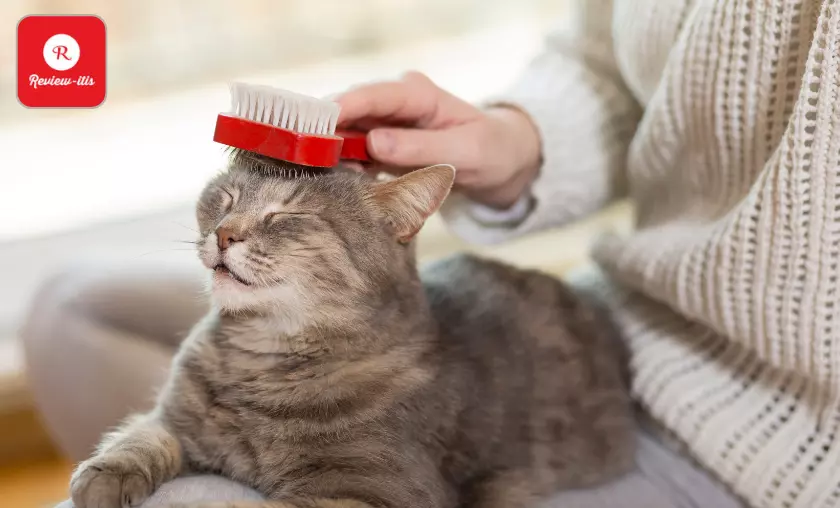
Did you know that daily brushing or combing can work wonders in reducing those pesky hairballs that tend to wreak havoc in our feline friends’ digestive tracts? Long-haired cats, in particular, greatly benefit from this practice as it helps prevent those bothersome mats and tangles from taking hold. You see, cats are meticulous self-groomers, but many pet parents may not realize that we can lend them a helping hand by gently removing loose hair through regular brushing.
Let’s get down to the nitty-gritty of encouraging our finicky feline pals to cooperate during these grooming sessions. The key lies in forging positive associations between brushing and delightful experiences. One clever approach is to establish a routine where brushing becomes a prelude to a delicious mealtime feast. Doing so creates a delightful connection in our cats’ minds, where the brushing process becomes synonymous with the anticipation of something truly delectable. It’s a brilliant way to turn grooming into a rewarding experience for both our cats and ourselves.
Don’t Overfeed Them Dry Food
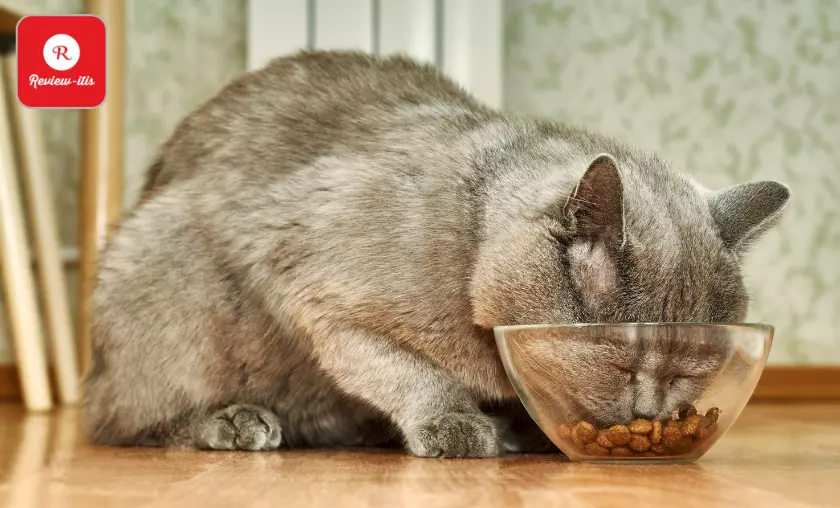
Cats are obligate carnivores, meaning they thrive on a diet primarily composed of meat. So, meat should always take center stage when it comes to their main meal of the day.
Now, here’s an important cautionary note: relying solely on dry food diets for cats can lead to some health concerns. You see, dry food often contains a higher percentage of carbohydrates, which, when consumed excessively, can be detrimental to our feline companions. We’ve seen cases of cats developing type 2 diabetes and even becoming overweight due to an overabundance of carbohydrates from dry food.
If you’re a pet parent to both dogs and cats, it’s crucial to understand that they have distinct dietary requirements. Feeding them the same food just won’t cut it. Remember, dog food is not suitable for cats, and here’s why: Cats lack the metabolic capacity to process carbohydrates the same way dogs do. Therefore, we must be mindful of the food we provide to our feline friends.
Consider incorporating wet food into your cat’s diet as either a part or, if possible, the entirety of their meals. Wet food aligns more closely with their nutritional needs as obligate carnivores and can significantly contribute to their overall health and well-being.
Keep an Eye on Their Thirst Levels
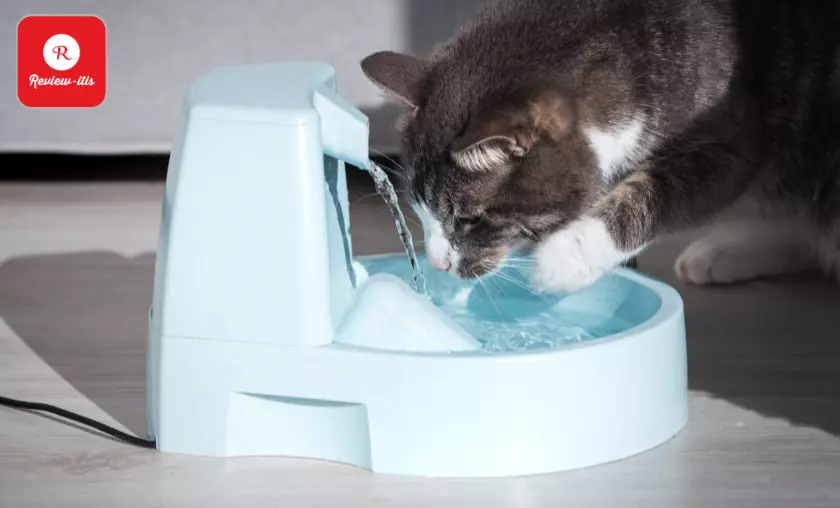
You see, domestic cats trace their roots back to desert-dwelling ancestors. As a result, they have evolved to require less water than their canine counterparts. In the wild, a cat’s diet often includes prey such as mice, which contain about 70% water. Fascinating. Now, let’s apply this knowledge to their modern-day diet.
When it comes to feeding our cats, it’s ideal for them to derive most of their water intake from food. Canned food, for example, typically consists of around 78% water, providing excellent hydration for our feline companions. On the other hand, dry food has significantly lower water content, averaging around 5% to 10%.
While it’s essential to provide fresh water to your cat at all times, regardless of their diet, you may notice that cats primarily consuming dry food tend to drink more water. It’s their way of compensating for the lower moisture content in their meals. Keep a watchful eye on our senior cats, nursing mothers, and those with chronic health conditions, as they are more susceptible to dehydration. Be on the lookout for signs such as sunken eyes, lethargy, and even panting, which may indicate that they need more hydration.
Have Enough Litter Boxes
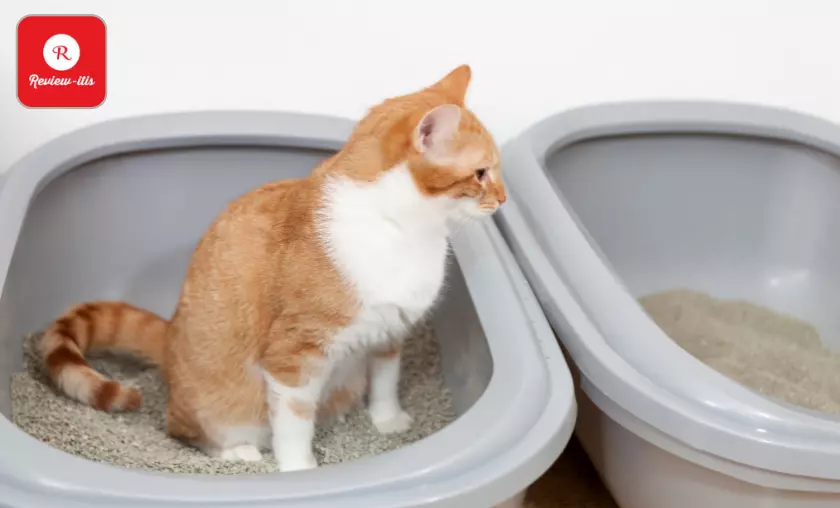
A good rule of thumb is to provide one litter box per kitty and an extra one for good measure. So, if you have three cats ruling your kingdom, it’s time to set up four litter boxes and strategically consider their placement.
Humans prefer hiding litter boxes in secluded corners or basements, but it’s crucial to consider our cats’ comfort. We need to tap into their natural instincts, my friends. When our furry friends engage in their private business, they want to be able to maintain a vigilant eye on their surroundings. After all, it’s a vulnerable position to be in!
Therefore, when choosing the locations for the litter boxes, opt for areas that offer a clear view of the surroundings. Cats appreciate having a sense of security while attending to their needs. In that same vein, be mindful that some cats may be reluctant to use litter boxes with covers or ones cunningly concealed within the furniture. They prefer an open and accessible space where they can navigate freely and without any hindrances.
So, my fellow cat enthusiasts, let’s put ourselves in our feline friends’ paws and create a litter box setup that caters to their natural instincts. By providing ample and strategically placed litter boxes, we can ensure our cats feel comfortable and safe.
Don’t Disregard Their Behaviour if They Pee Outside the Litterbox

There are several reasons why a cat may deviate from the litter box norm, but it’s important to rule out any underlying health issues first. So, my advice? Take your furry friend to the vet for a thorough examination to check for a urinary tract infection or any other potential illnesses that might be causing this unusual behavior. Once health concerns are ruled out, we can dive deeper into finding the right solutions.
Now, let’s talk about the litter box itself. Ensuring that the litter box meets your cat’s preferences is essential. Cats can be picky about their litter, so it’s worth experimenting with different types to see if there’s one that your furry friend prefers. Remember, variety is the spice of life, even for litter boxes!
Next up, cleanliness is key! Cats appreciate a pristine restroom experience, so be scrupulous about keeping the litter box clean. Aim to scoop the litter once or twice a day to maintain a fresh and inviting environment for your feline companion. Trust me, they’ll appreciate it!
Lastly, consider the location of the litter box. Cats crave tranquility when attending to their business, so think about providing a quieter and easily accessible spot for the litter box. By optimizing the location, you can create an environment that encourages your cat to use the designated area.
Get Them in the Habit of Using a Scratching Post
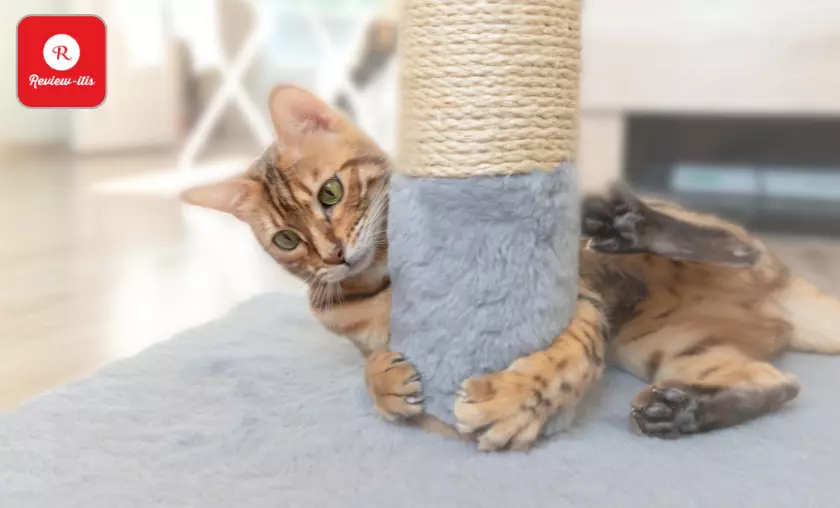
One common mistake many cat owners make is not realizing that a scratching post needs a little appeal to catch their feline friend’s attention. Here’s the trick: start by placing the scratching post right in the center of the room. You want it to be visible and accessible, not tucked away in a forgotten corner. After all, cats are social creatures who crave action and engagement.
Now sprinkle a dash of catnip on the scratcher when you first introduce it to your home. Catnip has a magical allure for our furry companions and can serve as a powerful motivator. It’s like giving your cat an irresistible invitation to come and explore their new scratching haven.
Once your clever kitty has gotten into the habit of using the scratching post, you can gradually move it to a less-trafficked area of the house. Doing so provides your cat with a dedicated space for their scratching needs while maintaining harmony in your living environment. If your cat has grown accustomed to the scratching post, you may even skip the catnip if you wish. It’s all about finding the right balance that suits both you and your feline friend.
Have Them Spayed or Neutered
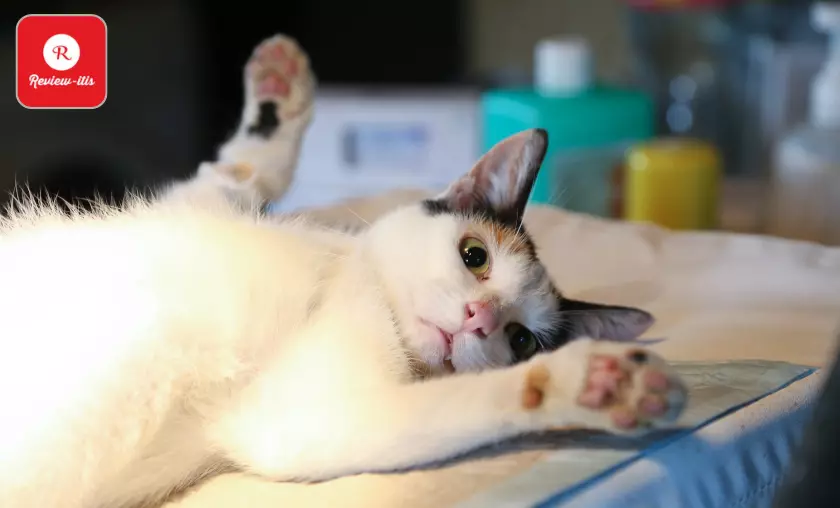
Let’s start with our fabulous feline females. Going into heat can be an uncomfortable and distressing experience for them. Spaying our female cats can spare them from this discomfort and ensure their overall comfort and happiness. But that’s not all! Spaying also plays a significant role in keeping our cats safe. Unaltered male cats, in particular, are prone to fights, risking disease transmission through bites and scratches. We wouldn’t want our beloved companions to fall victim to such perils, would we?
But wait, there’s more. The situation isn’t much better for our female feline friends. Did you know that female cats can become pregnant as early as four months old? Mating and giving birth to multiple litters can stress their delicate bodies immensely. It’s crucial to spare them from these hardships through the process of neutering. Let’s not forget the overwhelming number of unwanted cats awaiting their forever homes in shelters. By choosing to spay or neuter our cats, we play our part in preventing further population growth and reducing the strain on already overflowing shelters.
Use a Carrier or Other Safety While Traveling

Never allow our cats to roam freely and unrestrained in a car. Not only is it highly distracting for the driver, but in the unfortunate event of an accident, our feline friends can transform into dangerous projectiles, posing a significant risk to themselves and others. That’s why investing in a comfortable travel carrier specifically designed for car rides is vital. This will keep our cats secure and protected, ensuring they feel at ease during the journey.
We must also acknowledge the potential dangers of leaving our cats alone in a parked car. Regardless of the temperature outside, even in seemingly mild conditions, and even with the windows cracked open, a car can swiftly transform into an uncomfortable and hazardous environment for our furry companions. It takes only a matter of minutes for a cat to suffer dire consequences in a warm car. So, here’s the bottom line: if you don’t plan on bringing your cat inside with you, it’s best to leave them safely at home, where they can enjoy their familiar surroundings.
Consider Opting for a Cat Specific Vet
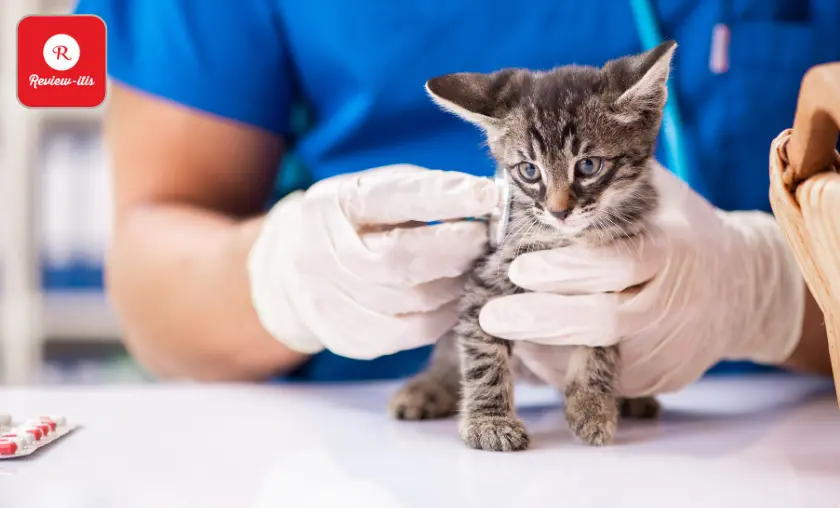
Now, it’s no secret that many veterinary practices cater to multiple species, which often includes our canine companions. However, this can be quite overwhelming and even scary for our cats, especially when they find themselves in a waiting room surrounded by enthusiastic dogs. But fear not, for there are solutions to make the experience less stressful for our feline friends.
Ideally, we should seek out a veterinarian who understands the importance of separate waiting areas for cats and dogs. This ensures a more serene and peaceful environment for our cats, away from the hustle and bustle of their canine counterparts. However, we understand that not all veterinary practices have the luxury of space to accommodate separate waiting rooms. In such cases, fear not! There are steps we can take to alleviate the stress.
Don’t hesitate to communicate your concerns if your preferred veterinary clinic doesn’t offer separate waiting areas. Request to be called into the exam room as promptly as possible to minimize your cat’s exposure to other animals. A shorter waiting time can make a significant difference in reducing their anxiety.
Also, you may explore the option of finding cat-only veterinarians in your area. Yes, they do exist! These specialized professionals focus solely on feline care, creating an environment tailored to our cats’ unique needs. By opting for a cat-only veterinary practice, we can ensure that our kitties won’t be bombarded with other species’ sights, sounds, and smells during their visit.
Appreciate Their Affection

Your cat might demonstrate their love by presenting you with the fruits of their successful hunts. Now, I know it may not always be the most pleasant sight—imagine a decapitated mouse proudly displayed at your feet. But here’s the key: accept these gifts with grace. It’s their way of showing you their appreciation, their bond with you as their trusted human. So, even if it’s a bit gross, remember to show gratitude for their loving intentions.
But that’s not all, my friends. Cats have a repertoire of other affectionate behaviors up their furry sleeves. Ever experienced a gentle head bunt from your feline companion? Ah, it’s truly a heartwarming gesture. They’re marking you as their beloved human, claiming you as a member of their special circle. And let’s not forget the melodious purring, a soothing symphony that signifies contentment and affection. Oh, and those rhythmic kneading motions with their paws? That’s their way of expressing happiness and comfort in your presence.
So, dear cat lovers, don’t be afraid to bask in the moment when your feline friend showers you with love. Embrace their unique demonstrations of affection, whether through their hunting prowess or endearing behaviors like head bunting, purring, and gentle kneading. These gestures are a testament to the strong bond you share with your cat. Enjoy the love they bestow upon you and cherish the moments of connection that make your feline-human relationship truly extraordinary.
Conclusion
Adopting a few essential practices guarantees that our cats lead lives filled with happiness and good health. Understanding their unique needs as obligate carnivores is paramount, which involves providing them with a balanced, meat-based diet and ensuring they have access to an adequate water supply. Regular grooming, including brushing and combing, helps maintain their hygiene and prevents common issues like hairballs and mats.
Creating a safe and stimulating environment for our cats is equally crucial. This entails offering suitable scratching posts, ensuring they have enough litter boxes, and accommodating their individual preferences during veterinary visits. By minimizing stress and maximizing their quality of life, we can significantly contribute to their overall well-being. Lastly, staying attentive to any changes in their behavior and promptly consulting a trusted veterinarian is key to the early detection and prevention of potential health concerns.
So, fellow cat enthusiasts, let’s integrate these tips into our daily routines and give our furry friends the love, care, and attention they deserve. With proper nutrition, regular vet check-ups, and a nurturing environment, we can ensure our cats thrive and enjoy long, healthy lives as cherished members of our households.
To read more similar articles, click here.
Thanks for visiting our Website. If you appreciate our work, kindly show us some support in our comments section 🙂